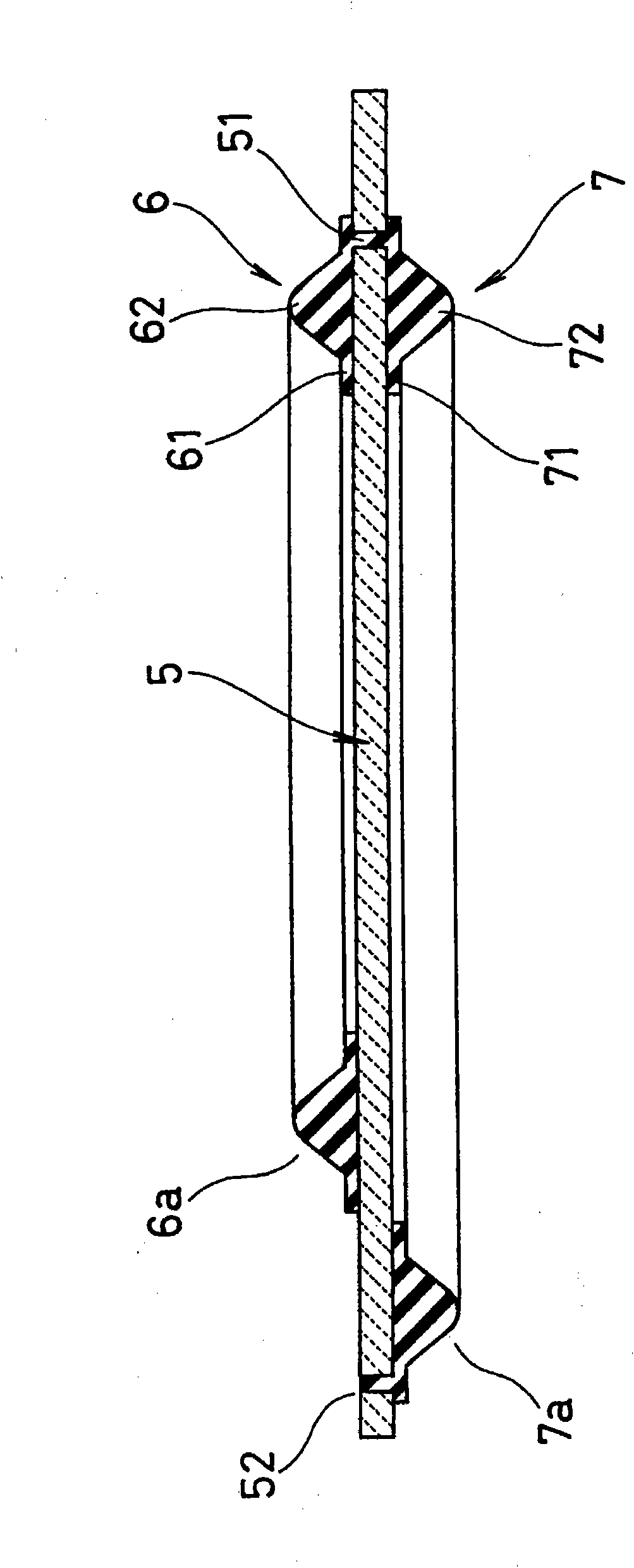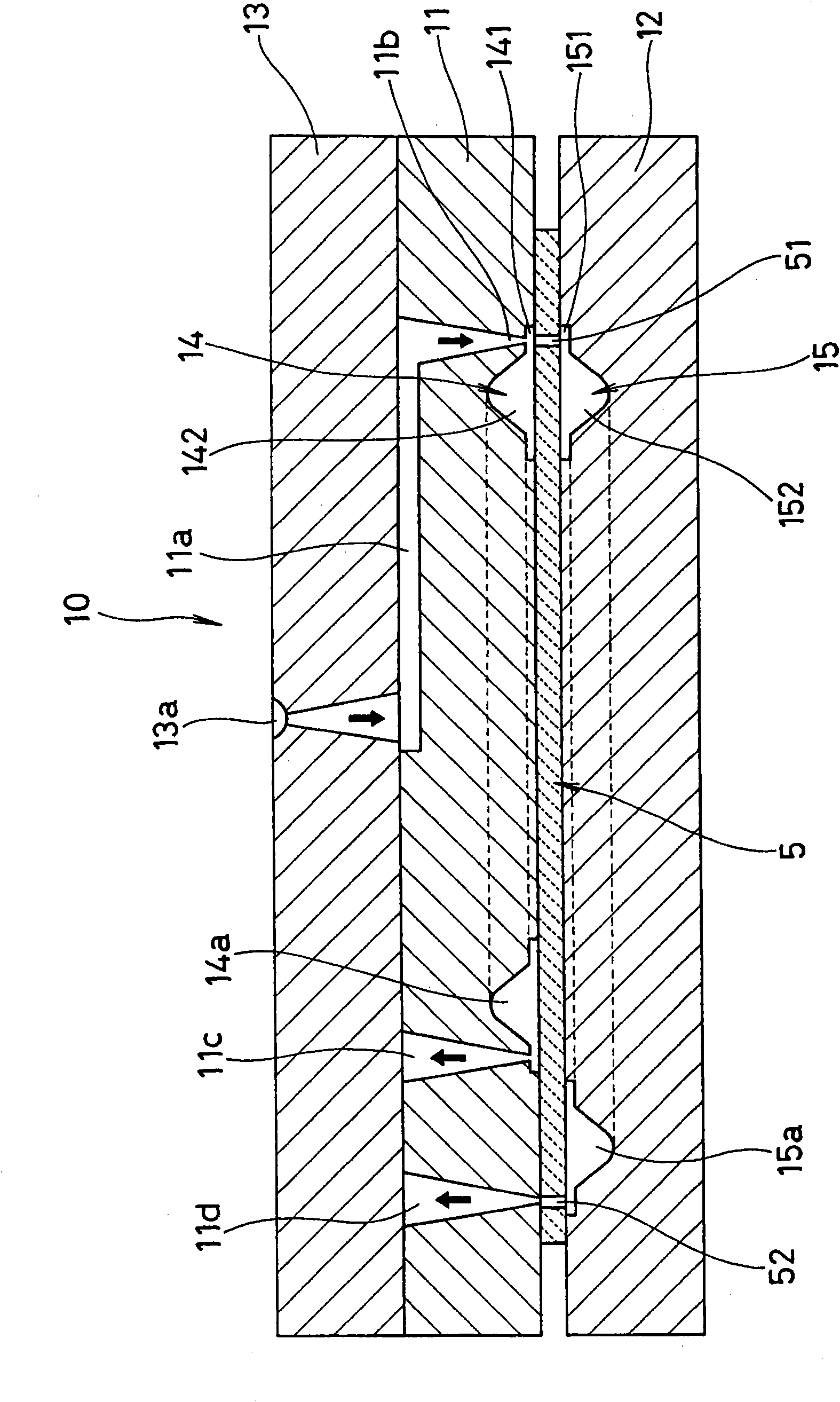Seal component manufacturing method
A manufacturing method and technology for sealing parts, applied in the direction of final product manufacturing, sealing/supporting device, sustainable manufacturing/processing, etc., can solve the adverse effect of sealing gasket 2, damage to substrate 1, taking a long time, etc. problem, to achieve the effect that the structure of the metal mold is not complicated and the structure of the metal mold is simplified
- Summary
- Abstract
- Description
- Claims
- Application Information
AI Technical Summary
Problems solved by technology
Method used
Image
Examples
Embodiment Construction
[0047] Next, preferred embodiments of the method of manufacturing a sealing member according to the present invention will be described with reference to the drawings. first, figure 1 It is a cross-sectional view showing a sealing member in which gaskets having different elongated shapes are integrally formed on both surfaces of a base material.
[0048] figure 1 The sealing member shown in is used as a sealing member for each cell in a fuel cell, and sealing gaskets 6 and 7 having different extended shapes (lip lines) are integrally formed on both surfaces of a base material 5 .
[0049] Specifically, the substrate 5 is made of, for example, a synthetic resin film, a carbon plate, ceramics, a metal porous material, or a thin metal plate, but is not particularly limited. The gaskets 6 and 7 are made of rubber material or a synthetic resin material having rubber-like elasticity, and are connected in a ring shape (endless shape) along the vicinity of the outer periphery of t...
PUM
 Login to View More
Login to View More Abstract
Description
Claims
Application Information
 Login to View More
Login to View More - Generate Ideas
- Intellectual Property
- Life Sciences
- Materials
- Tech Scout
- Unparalleled Data Quality
- Higher Quality Content
- 60% Fewer Hallucinations
Browse by: Latest US Patents, China's latest patents, Technical Efficacy Thesaurus, Application Domain, Technology Topic, Popular Technical Reports.
© 2025 PatSnap. All rights reserved.Legal|Privacy policy|Modern Slavery Act Transparency Statement|Sitemap|About US| Contact US: help@patsnap.com



